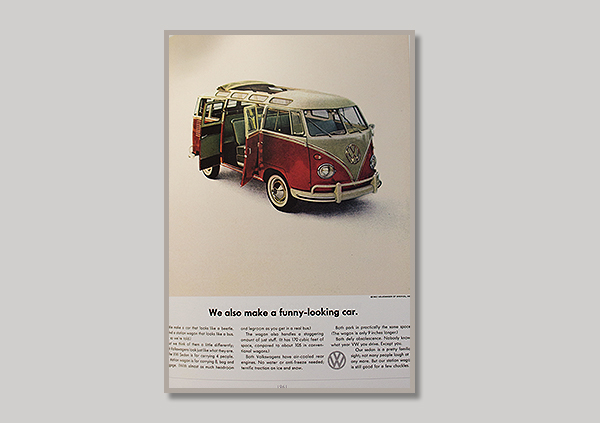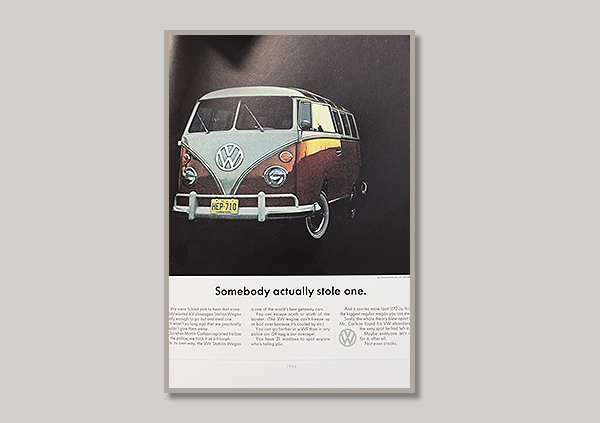1940s
1947
It all started with a man called Ben Pon. Mr Pon was a Dutch businessman, who began importing Volkswagen Beetles into the Netherlands in 1947.
After visiting a VW factory in Wolfsburg, he sketched out an idea for a brand new automobile. The VW engineers would use this as inspiration for the VW campervan.

1949
At a press conference on November 11th, 1949, the T1 Volkswagen was revealed to the world. Engineers had built the prototype using Pon’s sketch.
It was VW’s first attempt at a ‘bus class’ motor vehicle, and was recognised as a huge success story. This exact T1 can be found today at the Volkswagen AutoMuseum.


1950s
1950
Type 2 of the T1 went into production in early 1950, with VW building two different models – the commercial Transporter, and the Kombi.
Type 2 of the T1 went into production on March 8th 1950, with VW committing to building a total of ten automobiles per day.
There were two different models produced. The commercial Transporter, and the Kombi, which had two side windows and a couple of removable seats in the back.
A couple of different nicknames were given to the Type 2, including ‘Splitty’ due to the front windscreen being split into two windows, and ‘Bulli’, which was originally supposed to be the official name.
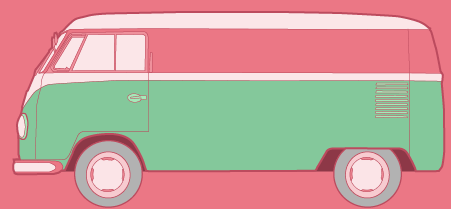
1951
The following year, VW releases a new Type 2 T1 model to market. Known as the ‘Samba’, this bus has 21 windows located all the way around, with the option of having two more in the roof.
In 1953 Wesfalia introduced the Camping Box - a set of removable camping furniture.

1954
The Transporter model goes on sale in the UK, at a price of £668 (the equivalent of around £18,000 in today’s money).
Initial sales figures were underwhelming, with just 786 units being sold that year. However, things quickly began to pick up as the model gained in popularity.

1955
The VW brand was thriving. Interest in the T1 ‘Bulli’ models was increasing year after year, and the car maker was struggling to cope with all the demand.
Having already opened factories in Brunswick and Hannover (and having capacity at the Wolfsburg plant maxed out), the company decided to establish another base in Kassell.
Demand for its T1 ‘Bulli’ models had been increasing year after year, and the car maker was struggling to cope with.
In 1955 the first Westfalia production line fully fitted camper,The Export, went into production. Although a one-off fitted camper was specially built by Westfalia in 1952


1960s
1962
After 16 years of production, the one millionth Transporter vehicle was built at the VW factory in Hannover. It would take just six more years before VW reached the two million landmark.
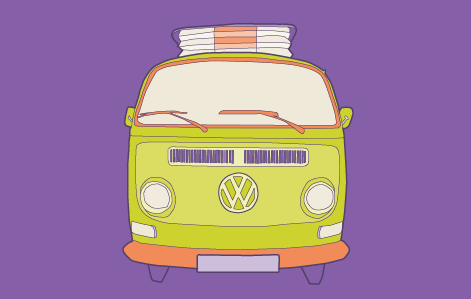
1968
1968 saw the dawn of a new era at Volkswagen. Having stopped production of the T1 model a year earlier, the car maker began its rollout of the T2.
Although it looks pretty similar to the T1, the T2 was almost entirely different. It had a new engine, new suspension, and a stabilising bar was added to the back.
The biggest difference, however, is that the split windscreen was replaced with a singular window panel. And so the nickname ‘Splitty’ was no more.


1970s
1973
A new version of the T2 was introduced in 1973. It was referred to as the ‘late-bay’, with previous models being labelled ‘early-bay’.
The ‘late-bay’ had a slightly different look, including a square style bumper. It also had advanced safety features (such as improved brakes) and the option of a larger engine.

1979
A decade after the introduction of the T2, VW began production on any even newer model. The T3 was released in May 1979.
The Westfalia camper version of the T3 was heavily marketed by VW, noting features including a pop-up roof, a stove and a sink.
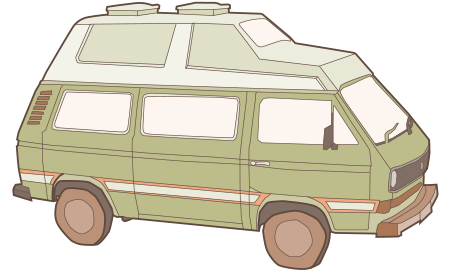

1980s
1981
For the first time, VW campervans are fitted with a diesel engine. It was the same engine previously introduced into the VW Golf.

1983
VW begins production on a new version of the 'Samba Bus', known as the 'Caravelle'.
It had a fresh new look, upgraded features and was built with “comfortable passenger transport” in mind. It could also be converted into a cosy living space.
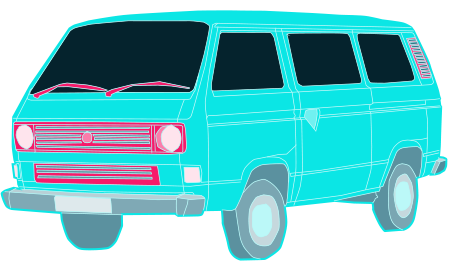
1985
The introduction of the VW Transporter 'Syncro', a four-wheel drive vehicle with a higher level of utility. Perfectly suited to off-road driving.
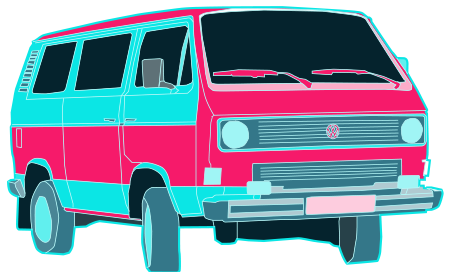
1988
Westfalia’s campervan modifications underwent an overhaul 1988 with a completely new look. This more modern vehicle was known as the “California Volkswagen Motorhome”.
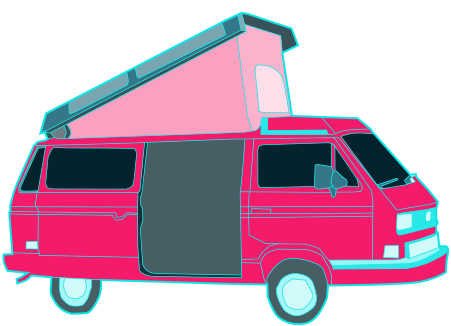

1990s
1991
The 90s began with a brand new generation of Transporter, known as the T4. Whilst mainly used as a commercial vehicle, a Caravelle version was available.
VW considered this model to be revolutionary – comparable to when they went from the Beetle to the Golf in 1974.
The T4 was an upgrade in every way. It has a new design, more power, a front water-cooled engine, and was much more ideal for converting to a small or medium-sized campervan.
Production of the T3 continued until 2002.

1997
Thirty-five years after producing the one millionth Transporter vehicle, VW rolled out number eight million – including one million T4 models.


2000s
2000
VW’s Hannover factory saw record production in 2000, building a total of 178,000 automobiles. Approximately 139,000 of these were Transporter, Caravelle and Multivan models.

2003
After an official unveiling in 2002, the T5 went into full production in 2003. Both the Transporter model and the Caravelle range were made available.
In addition, a new version of the California Motorhome was released – this time built in-house by VW.
It was the perfect modern day campervan. Fully-equipped with beds, a fold-up table, seats and a sink.
A more affordable option, named the ‘California Beach’, included just a bed.

2015
After nearly 12 million T series vehicles had been produced, the all new T6 is launched.
The T6 features both petrol and a completely new generation of TDI engines for the EU6 markets, together with improved safety, comfort and infotainment, including a Bluetooth hands-free system as standard.
Within three years of launch the 500,000th T6 had rolled off the production line in Hannover.

2018
California 30 Years Limited Edition launched. Limited to 999 vehicles, each California 30 Years will have a unique badge showing its production number from 1-999.
Grand California 600 and 680 models debut at the Dusseldorf Caravan Salon. Based on the VW Crafter, the two new Grand California models sport enhanced space and comfort. A new, exciting and eagerly awaited generation of campervan is born.

Famous Campervans & Their Owners
Celebrity chef Jamie Oliver is a well-known VW Campervan owner. He famously appeared on Top Gear trying to cook a meal whilst being driven around the top gear circuit in his Porsche pimped, retro VW campervan. Other famous owners of the retro VW camper include Roger Daltry of The Who, musician and DJ, Fat Boy Slim and Grand Prix racing driver Jenson Button. Jenson Button and World Champion Grand Prix driver Lewis Hamilton also used a VW Campervan to commute to Silverstone
What's Next?
The VW T series has come a long way since its launch in the 1950s. Initially available in petrol only, VW have been working on electrification of the T series since the 1970s. Following the release of the T6 model in 2015, VW decided to do something bold. They began working on a brand new, futuristic, electrically powered, self-driving campervan. Based on the old 60s design, this retro vehicle is sure to be a hit with lifelong fans of the VW van series. Scheduled for launch in 2022 the all new VW I.D. Buzz will sport an electric motor. VW claim the I.D. Buzz will have a range of 600km – that’s over 370 miles. They also claim the production Buzz could do 0–62mph in around five seconds. The new vehicle will be priced at around £50,000. Autonomous driving won’t be a day one option, but this functionality is on the roadmap.
Advertising
Sources
http://automuseum.volkswagen.de/en/the-cars/the-beloved-camper.html
http://www.thetruthaboutcars.com/2010/04/the-birth-of-the-vw-bus-from-first-sketch-to-production/
http://www.thesamba.com/vw/archives/manuals/2_50bus.php
http://www.volkswagen-commercial-vehicles.com/en/company/chronicle/1967-1974.html
https://www.volkswagen-vans.co.uk/media/1757077/55570_vwcv_transporter_60_years_book.pdf
https://en.wikipedia.org/wiki/Volkswagen_Transporter
http://news.bbc.co.uk/1/hi/uk/8704175.stm
https://en.wikipedia.org/wiki/Volkswagen_Type_2#T2



